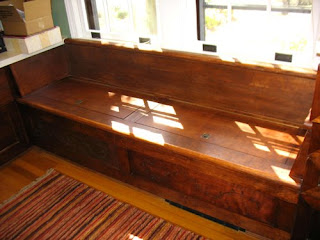
Kitchens - the engine of the house. All engines run similarly, but unlike engines, kitchens must satisfy the aesthetic of its owner.
Creating a kitchen that fulfills the aesthetic, and also meets a family's functional demands, requires careful attention to materials, scale, detail and history. A kitchen design must consider the context of the house vocabulary and its relationship to the house plan and site, overlaid with the family's use patterns and lifestyle.
We have assembled a slideshow of a few of the kitchens that reflect these considerations. Many of these examples were kitchen restorations that required integrating the design into a historic style. The larger task of the design of the kitchen is to fully integrate the kitchen into the whole of the house, in a seamless manner. This process requires an awareness of the subtleties of design, style and space. It is what the best architectural design is about. We believe these are good examples of that achievement.
[Slideshow notes: To review some details about each image, move your cursor to the top of the frame to reveal "Show info" and click on the words. Click "Show info" again to turn off the text. Move your cursor to the bottom of the frame to reveal thumbnail images or to pause the slideshow.]



































